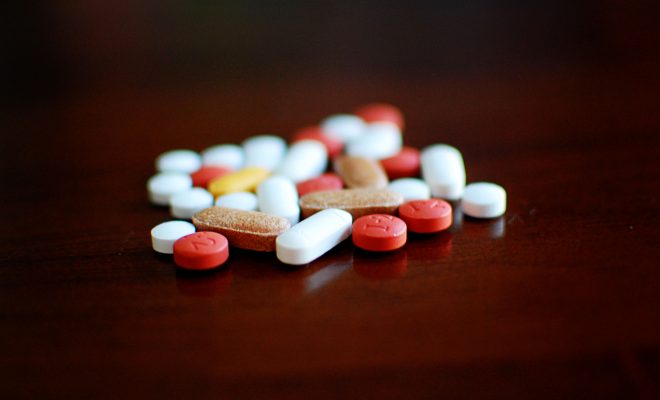 "Pills" Courtesy of [Jamie via Flickr]
"Pills" Courtesy of [Jamie via Flickr]
Health & Science
FDA Priority Review Vouchers: Golden Tickets or Inefficient Incentives?
When introducing a new drug into the consumer marketplace, companies must undergo a rigorous testing and approval process from the Food and Drug Administration (FDA). After a company obtains promising lab results, applications are then submitted to the FDA to implement clinical trials. Clinical trials can last for years before a new drug application (NDA) is submitted to the FDA for approval. To speed up this lengthy process, an initiative was passed in 2007 by Congress under the Food and Drug Administration Amendments Act (FDAA) that contained a special section for priority review vouchers. Drugs for specific tropical diseases and rare pediatric disorders are eligible for such a voucher.
Priority review vouchers allow a company to fast-track government review for a particular drug. These “golden tickets” can be extremely valuable for drug companies, since the difference in drug approval can be as long as seven months. Companies also have the option to sell the vouchers to the highest bidder; since vouchers do not expire, they can then be sold an unlimited amount of times. While this valuable program may incentivize the creation of drugs for problematic diseases and disorders, it has also been met with its critics who state the program is ineffective and simplifies complex issues.
Evolution of Priority Review Vouchers
The development of a new drug is an extremely long and cost intensive process. Drugs tend to be in the preclinical and discovery state for one to six years, and then enter the clinical phase for about six to eleven years before finally reaching the FDA for review. Normally, FDA drug review takes ten or more months, but can be upwards of two years before a drug is approved for the market.
The priority review voucher program was first introduced in a paper in March 2006, published in the Health Affairs journal, from a team of researchers at Duke University. In “Developing Drugs for Developing Countries,” the authors advocated for a priority review system, as there were no sufficient incentives for companies to produce drugs for neglected tropical diseases. The “prize” could either be redeemed by the recipient or sold to another company for use. The voucher does not guarantee approval by the FDA, but it does guarantee that a drug will be reviewed and have a decision rendered within six months in conjunction with the NDA.
In 2007, the priority review voucher system became a reality when Congress passed the FDAA, which contained the provision “Priority Review to Encourage Treatments for Tropical Diseases” in Section 1102. Any drug intended to treat a number of diseases including: malaria, cholera, tuberculosis, and leprosy, among many others, was eligible to receive a priority voucher. These diseases were chosen because they tend to occur in poorer and developing countries that lack adequate market incentives to invest and develop treatments for “neglected tropical diseases” (NTD). As of April 19, 2016, Zika was also added to the list of tropical disease eligible to receive a priority review voucher.
Expansion of the Program
In 2012, the the priority review voucher program was expanded to include rare pediatric diseases. Under the Food and Drug Administration Safety and Innovation Act (FDASIA), Congress approved the voucher for additional therapies for rare pediatric subsets of other diseases. Section 908 of FDASIA has defined a “rare pediatric disease” as one which “primarily affects individuals aged from birth to 18 years, including age groups often called neonates, infants, children, and adolescents.” It is also a rare disease according to federal statute, meaning it affects 200,000 persons in the U.S. or fewer.
The expansion of the voucher system to rare pediatric diseases included some key differences. While modeled after the tropical diseases voucher, the rare pediatric voucher was much easier to use. For a tropical voucher, the FDA had to be notified 365 days prior to its use, while the rare pediatric voucher had a 90-day time frame. Moreover, the rare pediatric voucher was eligible to be sold an unlimited amount of times, while the tropical disease voucher could be sold only once.
In December of 2014, the stark differences were eliminated between the two vouchers under the law Adding Ebola to the FDA Priority Review Voucher Program Act. Now tropical vouchers may be sold an unlimited number of times and may be redeemed in just 90 days. Currently, the cost of the voucher fee for 2016 is $2.7 million, in addition to the NDA feed of $2.4 million.
Vouchers Awarded and Used
To win a voucher, a company requests a priority review designation from the FDA, which determines if the drug is significant enough to treat a particular condition. Once the FDA awards a company priority review designation, it will take another six months to determine if the drug should be awarded a priority review voucher. If a company receives or purchases a priority review voucher, it is then able to inform the FDA of its intent to use the voucher on an upcoming submission. The FDA will have the option to accept the voucher and agree to review the drug and come to a decision within six months.
Currently, the FDA has awarded nine vouchers–six for rare pediatric diseases and three for tropical diseases. Drugs for the NTDs malaria, tuberculosis, and leishmaniasis were awarded vouchers, as well as the drugs for the following pediatric diseases: Morquio A syndrome, high-risk neuroblastoma, rare bile acid synthesis disorders, hereditary orotic aciduria, hypophosphatasia, and lysosomal acid lipase deficiency.
Interestingly enough, five of the vouchers awarded have remained unused. Five of them were either transferred or sold, and to date, only four vouchers have been used. In total, two of the vouchers used have resulted in FDA approval, one has been rejected, and one is still in review.
The money these vouchers have been able to generate in the market has been staggering. BioMarin’s voucher from 2014, the first ever to be sold, was purchased for $67 million. Subsequent vouchers sold fetched even higher prices, with the most recent voucher sold in August 2015 by AbbVie, who paired $350 million for a voucher original awarded to United Therapeutics.
Efficacy of Priority Review Vouchers
Recently, priority review vouchers have come under fire for not necessarily incentivizing development in the areas the program was designed to assist, namely NTDs. A few articles have emerged lambasting the use of priority review vouchers, denying that they are stimulating any sort of drug innovation and development.
For example, the first priority review voucher was awarded to Novartis’ anti-malarial drug Coartem; however, the drug was widely used around the globe for almost a decade before the FDA approval. Thus, awarding a priority review voucher for this drug does not necessarily create an incentive for new drug innovation. Instead, it is merely a large sum of money that does not encourage new research and development. Moreover, Impavido, a treatment for leishmaniasis created by Knight Therapeutics, was largely developed by the World Health Organization and other partners back in the 1990s and approved in 14 countries before 2010.
This seems to be indicative of a loophole for pharmaceutical companies, one in which older drugs are are registered in order to obtain a highly valuable voucher. At least for NTDs, exploitive practices by companies appear to be the norm, most recently illustrated by KaloBios’ attempt to obtain a voucher for a widely used drug to treat Chagas’ disease after acquiring the rights to the drug from another company.
As for rare pediatric diseases, the U.S. Government Accountability Office has recently stated that it is still too early to determine whether the voucher program is working. The six drugs awarded vouchers were already in development before the program’s expansion in 2012. It is quite possible that drugs would have been approved without a voucher in the first place, and they were not developed with the incentive of a priority review voucher as the ultimate goal.
Other Concerns
Recent papers published earlier this year in an issue of Health Affairs note even more concerns with the priority review vouchers, as well as ways to strengthen the program. The availability and affordability of the drugs in the program are also a concern; after garnering a priority review voucher, there is no requirement that the drug be affordable or accessible. Global health advocates even requested that Sirturo, a tuberculosis drug awarded a voucher, be made more affordable for lower income families in areas where the disease exists the most.
The FDA has qualms that the voucher program is diverting resources away from other drugs still in review. The timelines between standard drugs and priority review voucher drugs differ substantially. By compressing the time frame significantly in which a drug must be reviewed, the FDA experiences more strain in trying to find qualified staff. Additionally, the drugs reviewed may be highly complex, which does raise some safety concerns.
Another significant concern is that the priority review voucher ignores a new drug’s actual utility, focusing only on a new drug’s ingredients. An effective drug that needs to be taken multiple times a day, something highly resource-intensive in developing countries, would be given priority over a following drug that was more sustainable from a cost and resource standpoint. Furthermore, drugs with little or no urgency may be able to have an accelerated review and approval, while drugs desperately needed on a much smaller timeline may have to wait years.
Conclusion
The lucrative nature of priority review vouchers is undeniable. The prize of a voucher means a swift path to a final FDA decision, which can put a company far ahead of the competition. Since the vouchers can then be sold an unlimited amount of times, the amount of money generated for already well-endowed pharmaceutical companies indicates that the program may need substantial review and an intensive overhaul. It may be critical to strengthen the qualifying criteria for obtaining a priority review vouchers to encourage new drug development or perhaps fixing the quantity of vouchers that can be available or redeemable at any given time.
The purpose of such a program is noble; for long-forgotten corners of the world, incentivizing the creation of drugs to combat and manage devastating diseases can be the difference between life and death. However, ensuring the drugs are not only new, but also accessible and affordable to those affected by severe diseases is of the utmost importance.
Resources
Primary
FDA: Development & Approval Process (Drugs)
Congress.gov: S.2512 – Adding Zika Virus to the FDA Priority Review Voucher Program Act
Additional
NPR: Are Golden Tickets That Speed Drugs Through FDA Worthwhile?
Health Affairs: Prescription Drugs, Global Health & More
OxFam International: Robbing the Poor to Pay the Rich–Novartis’ Christmas Gift to Itself!
MarketWatch: KaloBios Approved for Chagas Disease Drug Deal
Aids-Free World: Open Letter: Reducing the Price of Bedaquiline








Comments